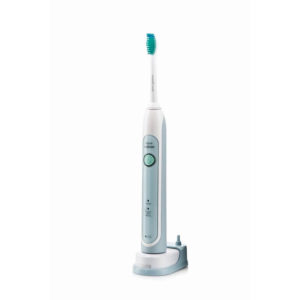This article answers the question, Are there any side effects of ultrasonic toothbrushes? Also, the functions and sense of the ultrasonic toothbrush are explained.
What did you do in earlier times to keep your teeth reasonably clean?
They chewed on soft woods, so-called chewing sticks, or cleaned their teeth with a natural sponge. Later, horse hair was also used in Europe to clean teeth. From the 1930s onwards, toothbrushes with nylon bristles were produced, but these were initially still very hard and often bleeding gums.
The research stands naturally not still in the field of toothbrushes. After the electric toothbrush, sonic toothbrush and ultrasonic toothbrush ensure clean teeth. They are often confused and considered as toothbrushes with one and the same cleaning procedure. However, there is a big difference between the two, which we explain below.
Cleaning with the sonic toothbrush
A lot has happened since the invention of the manual toothbrush. Development has progressed so far that it is now possible to clean teeth with a wide range of electric toothbrushes. One of them is the sonic toothbrush. It is no longer driven by an electric motor, but works with the aid of a sound generator.
Simply put, the brush button of a sonic toothbrush is set in motion by high-frequency mechanical vibrations. These are about 30,000 oscillations per minute, the number can vary depending on the model, some even work with a frequency up to 40,000 oscillations. You should also make sure that the vibration deflection is not too tight, it should be about 3-4 mm.
The brush head itself cleans like a conventional toothbrush from bottom to top or vice versa and not back and forth or even rotating.
As with all electric toothbrushes, little pressure should be exerted. The sonic toothbrush offers very good cleaning performance. It reduces plaque and thus the harmful bacteria very thoroughly, while the gums are gently treated and massaged. Various brush heads are available. It has been found that plaque bacteria can be reached and eliminated even 3 millimetres further than with the manual toothbrush.

The sonic toothbrush is generally perceived as very pleasant, it cleans thoroughly and gently. There are many suppliers, here one should inquire in detail and compare the advantages and/or disadvantages of the individual models with each other. Compare using characteristics:
- brush head shape,
- vibration number and angle,
- the texture of the bristles,
- manageability and others
How does the ultrasonic toothbrush work?
Ultrasonic toothbrushes are not as common on the market as the Sonic toothbrush just discussed. She also works in completely different ways, e.g. she also needs a toothpaste developed especially for this purpose. While the brush head of the sonic toothbrush is brought to vibrating n by the high-frequency vibrations, sound waves in the megahertz range with up to 1.6 million ultrasonic waves per second ensure that the teeth become clean with the ultrasonic toothbrush.
An ultrasound toothbrush is particularly advantageous for people who have dental implants or have recently had one implanted, as it works even gentler than the sonic toothbrush. For this reason, it can also be used for larger gum problems, as the painful and sometimes hurtful brushing is no longer necessary, although bacteria often accumulate in these areas.
Whoever uses an ultrasonic toothbrush needs a suitable toothpaste. This cream is applied to the teeth inside and outside before brushing and then the toothbrush is applied over the teeth. You usually stay a few seconds above the tooth and then move on to the next one.
Here opinions differ slightly, because some say that the ultrasonic waves cannot really be cleaned so thoroughly by the toothpaste/saliva mixture, since they actually only achieve their full effect in water.
Summary:
Sound toothbrush is generally recommended as a very good tooth cleaning agent by specialists, dentists and users. It cleanses very thoroughly, gently and also treats the gums with care. It also convinces with its very pleasant and simple handling and is therefore also suitable for people who have difficulties with motor skills.
The Ultrasound toothbrush should clean even more gently and is therefore particularly suitable for people with very sensitive or severely damaged gums and for people with dental implants.
In terms of price, both toothbrushes are already in the higher segment, but there are also considerable differences here. As already mentioned, one should thoroughly inform oneself about price, equipment and performance before the purchase. Due to the higher cleaning effects compared to the hand brush, however, it is definitely worthwhile to purchase one.





3 thoughts on “Are there any side effects of ultrasonic toothbrushes?”